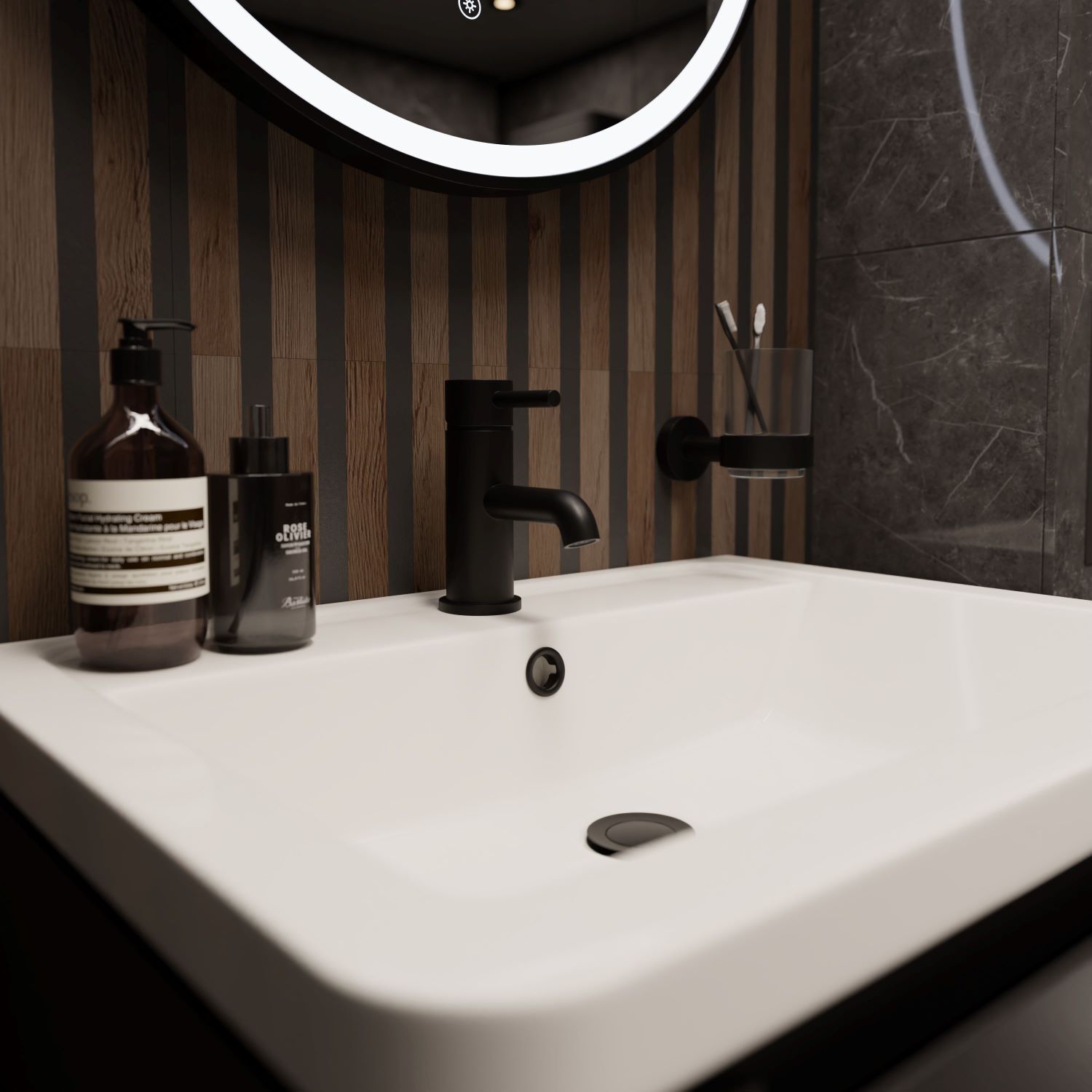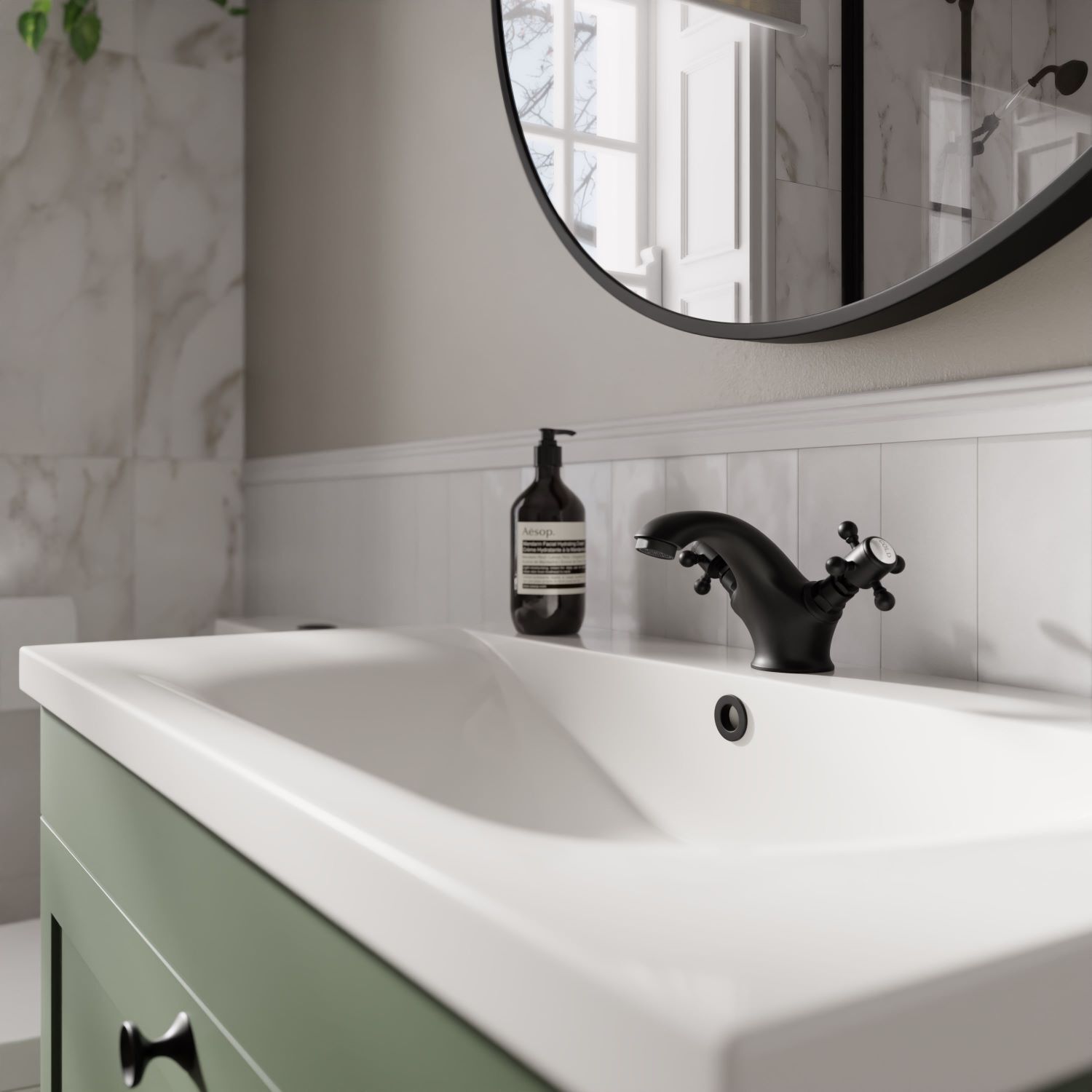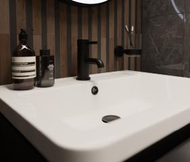How to Unblock a Sink: Fast Fixes for Kitchen and Bathroom Drains
14th Aug 2025

There's nothing more frustrating than using the sink, only to find the water emptying slower than usual – or worse, not draining at all. It's one of those problems that can put a damper on your day, and the last thing you want to do is call a plumber, especially when you might be able to fix the problem yourself.
Knowing how to unblock a sink at home doesn't have to be a daunting task. Whether you're wondering how to unblock a kitchen or bathroom sink, the good news is: there are plenty of simple ways to clear the blockage yourself. We'll walk you through step-by-step instructions, with expert tips and tricks from Brian Toward, CEO here at Wholesale Domestic.
Contents:
- Why do sinks get blocked?
- Unblocking a sink with a plunger
- How to unblock a sink without a plunger
- Frequently asked questions
Why do sinks get blocked?
A blocked sink is one of the most common bathroom issues. In fact, our research found that it's the second most searched for bathroom problem in the UK, with 3,800 Google searches per month (correct as of June 2025)!
Knowing the causes can help prevent future blockages, and here are some of the most common culprits:
- Hair and soap scum (particularly in bathroom sinks)
- Food scraps, grease, or cooking oils (often in kitchen sinks)
- Toothpaste, shaving cream, and other bathroom products
- Cotton wool, cotton buds, and even tissues (which shouldn't be flushed)
- Other small debris, such as paper, plastic, and even bits of packaging
Brian explains, "One of the most important things to remember is that, in an ideal world, the only thing that should go down your plughole is water. You might get away with thinner liquids like juice or squash for most plumbing systems, but oils, grease, and larger debris can quickly lead to blockages. The fewer things you put down the drain, the better."
Unblocking a sink with a plunger
A plunger is usually the go-to tool for unblocking a basin. It's simple to use, and can work wonders when you've got a stubborn blockage. The best part is: you don't need to be a DIY expert to give it a go – it's all about using the right technique.
Here's what you'll need:
- A cup-shaped plunger (this is the most common type)
- A towel or rag
- A large bowl or cup
- A bathroom cleaner (for cleaning the sink after)
1. Empty the sink
Before you get started, you'll need to remove any standing water in the sink. This gives you a much clearer idea of what you're dealing with.
Brian says, "If your sink's filled with standing water that won't drain, your first job is to get rid of it. Use a cup or container to scoop out as much as you can, leaving the sink as empty as possible. This lets you assess the cause of the blockage and see whether there’s something obvious in the way, like a ball of hair or the missing lid from your toothpaste that could be removed by hand."
2. Block the overflow
Before you start plunging, it's vital to block the overflow to prevent any air from escaping and to create a better seal around the plughole.
Brian explains, "You'll need to find the overflow hole, which is usually just below the tap. Use a towel or cloth to wipe away any moisture in the area, then block it up. You can use duct tape or a dishcloth to create an airtight seal. This helps the plunger work more efficiently as it keeps the pressure where it's needed."
3. Add a small amount of water
You need a bit of water in the sink to get the most effective suction with your plunger. Don't use too much: around 5cm of water will help create a tighter seal and help the plunger work its magic.
Brian adds, "Before you start, fill the sink with just enough water to cover the plunger's rubber cup. This will help you get a good seal, which is crucial for building up the pressure you need to clear the blockage. You don't want the water level too high, just enough to submerge the plunger and let it do its job."
4. Plunge the drain
Now, it's time to grab your plunger and say goodbye to that blockage. This is where the real work begins – creating suction to dislodge whatever's stuck in the drain.
Brian says, "Place the plunger over the plughole, making sure it's covering it completely. Then, grip the handle with both hands and start pumping up and down. The key here is to keep a steady rhythm to create suction. After a few pumps, you should hear the blockage start to break apart, followed by the satisfying gurgle of water draining away."
5. Clean the sink
Once you've successfully plunged the sink, it's time to clean things up and make sure it looks as good as new. While a full deep clean might not be necessary, spot cleaning – especially around the plughole – helps make sure your sink is ready to use.
Brian advises, "After you've cleared the blockage, it's a good idea to give the sink and the plughole a good clean. Use a sponge and a bathroom cleaner spray to remove any leftover debris and leave the sink sparkling. You may also want to run some water through the drain to make sure everything's flowing smoothly again."
How to unblock a sink without a plunger

Not having a plunger on hand doesn't mean you're stuck with a blocked sink. There are several other effective methods that can help clear the blockage and get your sink back to normal in no time.
Here are five simple and handy ways to unblock your sink without needing a plunger:
1. Using boiling water to unblock a sink
Boiling water can work wonders on a blocked sink, especially if the blockage is caused by grease or fat build-up. It's one of the quickest and easiest methods to try before moving on to something more complicated.
Brian explains, "If your kitchen sink might be blocked by grease and cooking oils, try pouring some boiling water down the plughole. The heat can melt the fat and help clear the pipe.”
“Stick the kettle on, and then make sure to pour it slowly and carefully into the plughole. If your sink isn’t made of metal, try to minimise how much water touches the sink itself to reduce the risk of cracking or warping. Take your time, especially if the sink still has water in it, to avoid accidentally splashing yourself with hot water."
2. Using bicarbonate of soda and vinegar
Another easy and natural way to unblock your sink is with a simple combination of bicarbonate of soda and vinegar. Most of us already have these in our kitchen cupboards, and they can work wonders on grease and blockages.
Brian suggests, "Start by pouring a couple of teaspoons of bicarbonate of soda into the plughole, followed by around one cup of white vinegar. Let the two ingredients fizz for about five minutes, and this fizzing action is the key to shifting any blockages. The chemical reaction between the two helps break down any grease, food particles, and hair stuck in the plumbing. After the fizzing settles, pour hot water down the drain to flush everything away."
3. Using washing powder
If your sink is blocked with grease or other oily substances, like cooking oil, washing powder can be a surprisingly effective solution. The ingredients in washing powder are designed to break down fats, making them an excellent ally when dealing with greasy blockages.
Brian explains, "Washing powder works similarly to bicarbonate of soda. For this method, add about two tablespoons of washing powder down the drain and immediately follow it with a kettle of hot water. The hot water will help activate the washing powder and start breaking down the grease and oils clogging up the pipes. It's a quick and cost-effective way to deal with kitchen sink blockages caused by fats like chip fat or cooking oil – though an even simpler trick would be to avoid pouring them down the drain in the first place!"
4. Using Alka Seltzer and white vinegar
This is a more unconventional, but still effective, method. Alka-Seltzer combined with white vinegar can help clear mild blockages. It’s an effervescent pain reliever and antacid that many already have at home. While it may not work for every type of blockage, it's worth trying for minor clogs, especially in bathroom sinks.
Brian suggests, "If you're using Alka-Seltzer to unblock your sink, drop two tablets into the plughole, followed by a cup of white vinegar. The fizzing reaction will help to break down any debris or soap scum that might be causing a clog. After a few minutes, flush the drain with boiling water to clear the mixture and any loosened gunk from the pipes."
This method isn't as powerful as the others on this list, but it's a good alternative if you don’t have access to vinegar and baking soda.
5. Using a drain unblocker
When all else fails, a drain unblocker is a solid option. These are designed to break down stubborn blockages caused by grease, hair, and other debris. They're typically enzyme-based or contain bleach, making them tough on stubborn clogs that won’t budge.
Brian explains, "Drain unblockers are ideal for denser clogs, like fat in kitchen sinks or hair in the bathroom basin. Simply pour the unblocker into the plughole, and let it sit for the recommended time, which is usually between 15 minutes to an hour. The enzymes in the unblocker will start breaking down the debris, clearing your drain. Afterwards, flush with hot water to help the process along."
Whenever you're using chemical products in and around your plumbing system, make sure you read the ingredients carefully to avoid damaging your sink and hardware.
Frequently asked questions
How can I unblock a sink with water in it?
Brian explains, "If your sink is half-full or more, grab a cup or beaker and carefully remove the water. The goal is to reduce the water level so you can start working on the blockage without making a bigger mess. Once the sink is relatively dry, you can move on to the next step to get that drain flowing freely again."
How can I unblock a sink blocked with oil?
"Pouring oil down your sink is one of the worst things you can do for your plumbing," says Brian. "Not only does it create a sticky build-up that can clog your pipes and cause your sink to smell, but it can also contribute to forming fatbergs – huge lumps of congealed fat and debris that block the sewage system. In fact, sewer blockages cost the UK up to £200 million yearly, and more than 3,000 homes are flooded annually because of them."
"When it comes to unblocking a sink that's blocked with oil, the best method is to use boiling water. The heat can help to break down the grease and get your sink flowing again.”
“If that doesn't do the trick, using bicarbonate of soda and vinegar, or a drain cleaner, can help cut through the grease. Just take care when using chemicals to avoid damaging your sink, especially if you have a natural stone basin."
How do I unblock a sink drain?
If none of the methods above have worked, you might need to tackle the blockage more directly by removing the sink drain. This process can feel a bit intimidating, but it's doable with the right tools and a bit of patience.
Here's how to do it:
- Prepare for the mess – Before you start, grab a pair of rubber gloves, a bucket to catch any water, and some towels to soak up any spills. It's going to get a bit messy, so wear some old clothes you don't mind getting dirty.
- Locate the U-bend – The U-bend is the curved pipe under your sink. It's designed to trap debris and prevent it from going further down the drain. Use an adjustable wrench to carefully unscrew the U-bend's fittings. Then, hold your bucket under the U-bend to catch any water or debris that falls out as the pipe loosens.
- Clean the U-bend – Once you've removed the U-bend, check inside for any blockages. You'll probably find a build-up of food, hair, or grease. Use a sponge or a cleaning brush to scrub the inside, and rinse it with water.
- Reassemble and test – Once the U-bend is clean, carefully reattach it, making sure the fittings are tight. Turn on the cold tap to test for leaks, keeping the bucket in place just in case, and if everything looks good, you're done!
How can I prevent future blockages?
Brian shares, "To avoid future blockages, the most important thing is being mindful of what goes down the drain. Many people don't realise that grease, food scraps, and even hair can cause significant blockages. You should always try to dispose of fats and oils in the bin rather than pouring them down the drain."
"Another great tip is to regularly clean your sink and drain. Keeping the sink drain free of debris like soap scum and other beauty products will help reduce the risk of blockages forming. For bathroom sinks, you could also use a hair catcher, which sits on top of the plughole to stop hair from entering the drain."
Upgrade your sink setup with Wholesale Domestic
Now that you know how to tackle a blocked sink, it might be the perfect time to give your sink a refresh.
Whether you're fixing a minor issue or looking to upgrade your space, Wholesale Domestic has everything you need. From stylish basins and practical bottle traps to kitchen and bathroom wastes, we have a range of products to keep your setup working smoothly.
If you need help choosing your new basin, contact us today, and check out our blog for more bathroom inspiration and how-to hacks. Or, if it’s not your sink but your toilet that needs unblocking, don’t panic – we’ve got a How to Unblock a Toilet Guide for that, too!

 FREE delivery over £500*
FREE delivery over £500* Visit our showrooms
Visit our showrooms Finance options available*
Finance options available* Apply for a Trade Account
Apply for a Trade Account